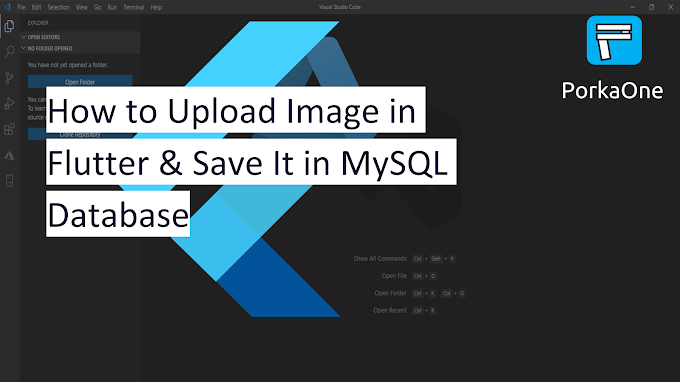Hello everyone, welcome back to porkaone. Alright, on this happy occasion I will thoroughly explore the definition of domain, structure, type along with examples. For those of you who are studying in the IT department, you really need to know about domains, are you curious?, let's follow the discussion below.
Domain
What exactly is that domain? The definition of a domain is a unique name used to identify a website, computer server, for example web server, mail server on computer and internet devices so that users do not have trouble accessing and do not need to remember the IP address of the server.
Actually, to be able to get data or information from a server, we need to use an IP address or Internet Protocol. IP addresses are usually a series of numbers, but most users will find it difficult to memorize and remember these numbers. That's why it takes a domain name to make it easier for users to remember when they want to access a server.
Dizzy?, the point is that the domain is a unique name for websites that you often access, such as Facebook, Twitter, Instagram, YouTube, and others. Domains are made to be easy to remember and they are unique and cannot be used by other websites.
Domain Rank
After we know what a domain is. Furthermore, there is a discussion that is no less interesting regarding the domain, namely the level within the domain itself. The domain tier is divided into three parts:
1. Top-Level Domain
The top-level domain, which is commonly abbreviated as TLD, is the domain name extension at the end, after the dot. For example; .com, .net, .id, and others.
2. Second-Level Domain
Second level domain or commonly abbreviated as SLD is a domain name which is also a domain name after the Top level domain extension. Generally refers to an organization, institution, agency, company, product, or brand that registers a domain name in a domain register. For example, sahretech.com, sahretech is a second level domain while .com is a top level domain.
3. Third-Level Domain
Third-Level Domains can also be called sub domains. Which we can think of as a child of the main website. For example: blog.mustechs.com, mail.sahretech.com, meet.google.com, price.wordpress.com, etc. Blog or mail or meet or price as a third-level domain, then followed by a second-level domain, and finally a top-level domain.
Domain Functions in General
Apart from what has been explained above, that the domain serves to provide convenience to the user, another function of the domain is also as an online identity or business brand on the internet.
Online marketing is a very important thing in today's digital technology era. The use of a domain name that is unique, easy to remember and sounds familiar to the user's ears will bring many special advantages for owners and business people. Not infrequently in order to get a name that brings good luck, many online business people do special research first.
Domain Types and Their Purpose
In addition to levels, domains are also grouped based on their respective functions and objectives. Well, if you usually see websites, there are .org or .gov or .id, etc., they each have their own goals. Check out the purpose of each TLD below
1. Generic Top Level Domain (gTLD)
Generic Top Level Domain is a TLD commonly used to name website addresses for general purposes such as businesses, organizations, agencies, and so on. Each TLD has a specific purpose, but sometimes websites use the wrong TLD. Although it's legal, but for some people who know it may feel strange and not infrequently people think that the website is not the official website.
.com: used on commercial or international sites.
.biz: used for business sites.
.info: used for informational sites.
.edu: used for educational sites.
.org: used for organizational sites.
.gov: used for government websites.
.mil: used for military sites.
.net: used for network or internet
.ac.id: used for college or university sites
.sch.id: used for school sites
2. Contry Code Top Level Domain (ccTLD)
Unlike gTLDs, ccTLDs are more specific to the destination country. If you've seen a website with an .id domain behind it, it means it's a website from Indonesia. Although specific to certain countries, websites with this domain can still be accessed anywhere in the world. It's just that for some search engines, websites that use ccTLD are not recommended in searches in other countries, because they are considered irrelevant to the search and the language the user is looking for.
.id: for sites in Indonesia.
.us: for sites in America.
.uk: for sites in the UK.
.sg: for sites in Singapore.
.my: for sites in Malaysia.
.cn: for sites in China/China.
If a domain is already in use, other websites will not be able to use it. Because before buying a domain, the domain provider will display information whether the domain name has been used or not. So if you have a unique domain name, register it immediately so that it is not used by others.
In addition to the domain name, each type of TLD such as .com, .net, .info, .id, and so on has a different price. So in addition to determining the goal, make sure it also fits your budget, choose the TLD that is most appropriate and truly describes the purpose of the website that you create.
Ok, so this article is about understanding domains, levels, and types of domains. Hopefully useful, if you have any questions, please leave your comments below. Don't forget to comment and share as much as possible with your friends. That's all and see you in another exciting article. :D







0 Comments
Come on ask us and let's discuss together
Emoji